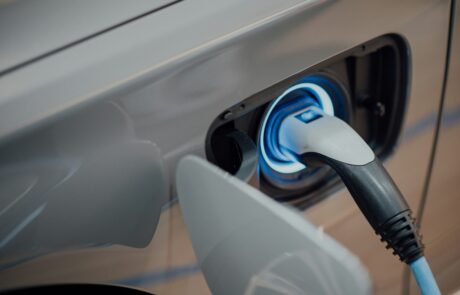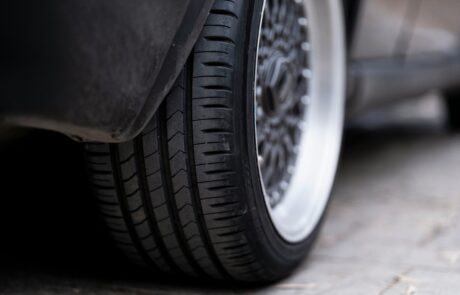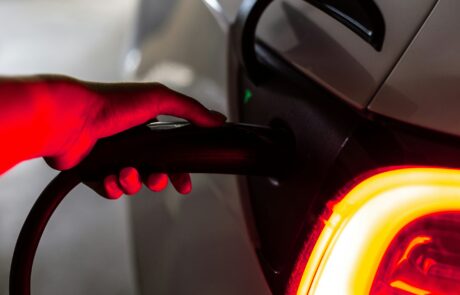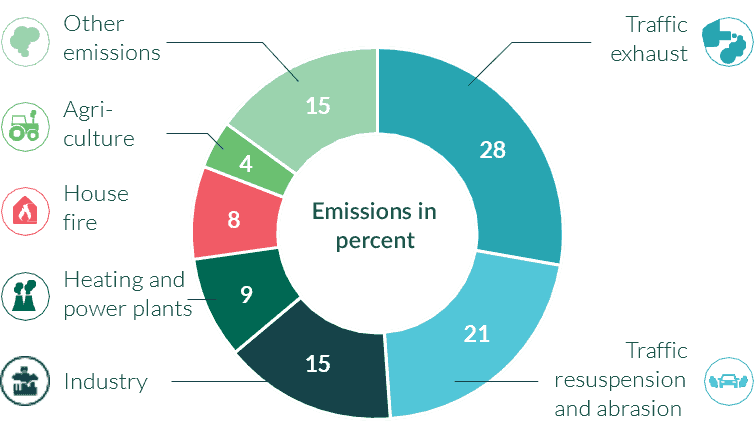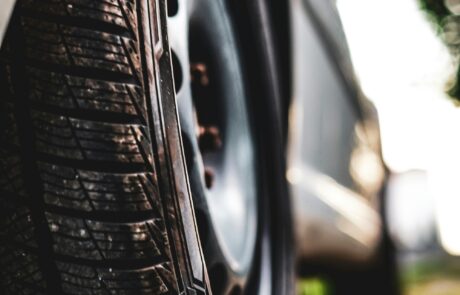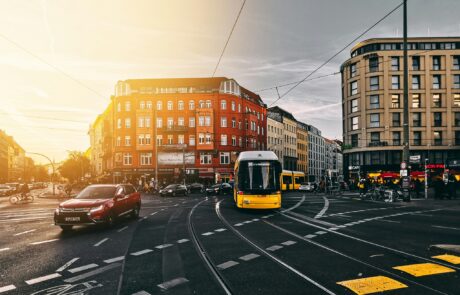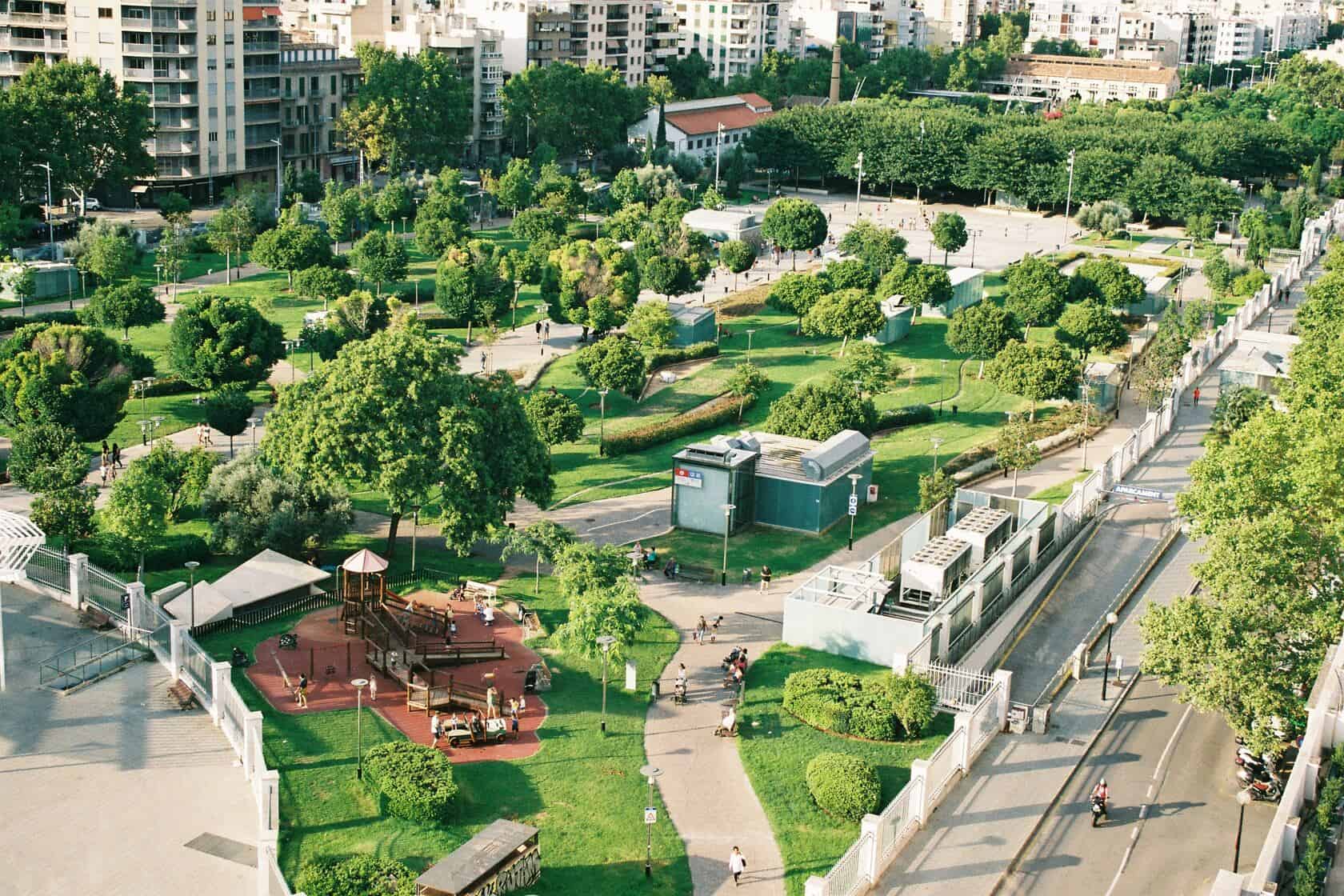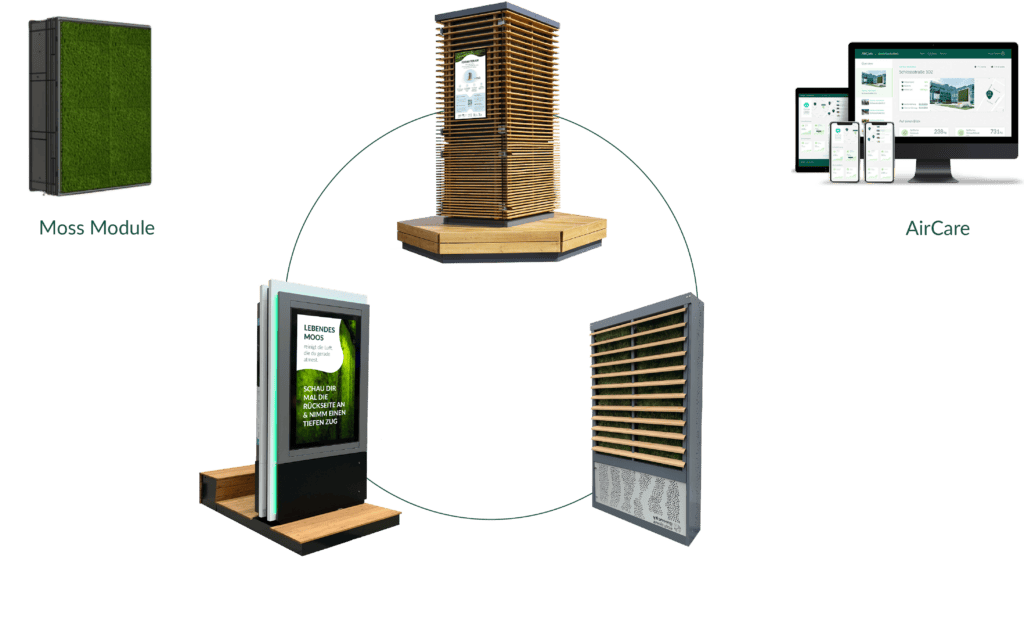Microplastics from Tire Wear
In the alphabet, F follows E.
Does fine dust also follow electric vehicles?
In autumn, two globally recognized days highlight the urgency of making cities cleaner, more sustainable, and more livable while presenting potential solutions: World Carfree Day and Zero Emissions Day. While e-mobility is often seen as a savior for clean air, studies reveal that the reality is more complex than assumed. These two global awareness days serve as reminders that reducing the number of cars alone is not enough—we need comprehensive, sustainable solutions to make our cities more future-proof, cleaner, healthier, and more livable.
Photos: Emre Karatas & Chuttersnap from Unsplash
Electric Vehicles: Clean Mobility or a New Environmental Challenge?
Electric vehicles are reputed to be environmentally friendly and to contribute to reducing CO₂ emissions. However, “the assumption that EVs are entirely clean and cause no air pollution is unfortunately incorrect”. A study even suggests that EVs might be more polluting than previously thought. It emphasizes that the production of electric vehicles, particularly their batteries, generates significant emissions. A key factor is the intensive raw material extraction required for EV batteries.
But that’s not all. A frequently overlooked issue concerns fine dust as a hazardous air pollutant, which severely affects air quality and public health, especially in urban areas. Not only exhaust emissions play a role—tire and brake wear also produce considerable amounts of fine dust, regardless of whether a vehicle is powered by an internal combustion engine or an electric motor.
Fine Dust: An Invisible Threat
“Fine dust and microplastics are widely discussed risks for the environment and human health.” Fine dust is particularly relevant “to policymakers, industries, and scientists. Besides CO₂ emissions, these tiny particles significantly impact life in many major cities and along highways, as they severely affect respiratory health”. Not only urban areas but also “natural ecosystems suffer from their effects.”
According to the World Health Organization (WHO), fine dust pollution leads to over four million premature deaths worldwide annually. These tiny particles penetrate deep into the lungs, causing respiratory diseases, cardiovascular problems, and even cancer. Cities with high traffic volumes particularly struggle with this invisible threat.
Photos: Engin Akyurt, Jara Lenz & Priscilla du Preez from Unsplash
Where Does Fine Dust Originate?
“But do these particles come exclusively from combustion engines? Not entirely, as electric vehicles also contribute to fine dust pollution.” The notion that EVs alone can fully solve existing problems and challenges falls short. “Dust particles do not only originate from exhaust pipes.” While EVs help reduce exhaust emissions, fine dust from tire wear and brakes remains an issue – possibly even at higher levels since electric vehicles tend to be heavier due to their batteries, which “leads to increased tire wear emissions”.
- A study by the Center for Earth System Research and Sustainability at the University of Hamburg and the Helmholtz Center Hereon was the first to analyze “the role of tire and brake wear in urban fine dust formation”, concluding that “this wear alone accounts for 12% of fine dust in Hamburg” – making it “the largest source of microplastics in the environment”.
- A joint analysis by the Fraunhofer Institute UMSICHT, the Karlsruhe Institute of Technology (KIT), and Carnegie Mellon University (CMU) supports similar assumptions: “Fraunhofer UMSICHT estimates that tire wear in Germany alone amounts to 60,000 to 100,000 tons per year, which equates to an average of approximately 1,000 grams per person per year in a population of over 80 million.”
This wear is dispersed by wind and rain into the air, soil, and water, constituting a significant source of environmental microplastics. As a result, it “can enter the human food chain.” Therefore, it is crucial to consider the environmental impact of EVs holistically rather than focusing solely on CO₂ emissions.
Emissions Analytics: “1,850 Times Higher Fine Dust Levels Due to EVs?”
- The data analytics company Emissions Analytics estimates that “tire wear in electric vehicles produces 1,850 times more fine dust than exhaust emissions”. While “particulate emissions from exhaust pipes have continuously decreased due to more efficient filter technologies and stricter regulations, emissions from tire wear are increasing due to heavier vehicles and more powerful motors.”
However, drivers can mitigate this effect through gentle driving and regenerative braking. Additionally, not just the quantity of tire wear but also its chemical composition and toxicity. Thus, further research is required.
- Other analyses suggest “10 to 25 percent higher emissions compared to tire wear from combustion engine vehicles”.
- A study by the Organization for Economic Cooperation and Development (OECD) found that “light electric vehicles emit significantly less fine dust than combustion engine vehicles –between 11 and 13 percent less PM2.5 and 18 to 19 percent less PM10. For heavier EVs with a range of around 500 km, the study predicts only a four to seven percent reduction in PM10 emissions, while PM2.5 emissions could increase by three to eight percent.”
However, “further simulations indicate that the spread of electric vehicles in the coming years will lead to only a minimal reduction in overall road traffic PM emissions”, according to the OECD.
Photos: Nabeel Syed, Frank Albrecht & Gilly from Unsplash
Reducing Emissions and Microplastics Sustainably
Why Innovative, Natural Solutions Are Essential for Livable Cities
To make urban areas truly more livable and sustainable, simply switching to electric vehicles is not enough. Cities must implement holistic solutions that reduce pollutants, including fine dust, and actively improve air quality. Natural solutions, as discussed in the BI-Medien article, play a crucial role in this transformation. Targeted greening projects and innovative approaches worldwide help improve urban climates.
Plants are a key element: they capture fine dust, filter the air, and produce oxygen. Through natural evaporation cooling, they can lower ambient temperatures. Urban trees, vertical greenery, and green roofs not only enhance aesthetics but also significantly improve air quality.
Photo: Nerea Marti Sesarin
Innovative Moss Filters for Pollutant and Temperature Reduction
Unfortunately, increasing urbanization and soil sealing make it more difficult to plant desirable greenery that binds emissions at their source and mitigates urban heat. Existing urban greenery is also severely affected – suffering from “vibration and fine dust pollution from traffic, limited space due to compacted soil and underground utilities, road salt, and damage from vehicles or construction work”. Climate change, with “water shortages and prolonged drought periods”, further weakens its resilience.
Specialized, living mosses can serve as an effective, nature-based solution, locally and immediately capturing pollutants, metabolizing them, and cooling the surrounding air through water evaporation. They provide a real alternative to conventional urban greenery.
Our fresh air concepts combine sustainability, climate protection, and digitalization and are often eligible for municipal and commercial funding. Green City Solutions offers financing, rental, and leasing options with attractive packages. Feel free to contact us for more information:
Photo: GCS


